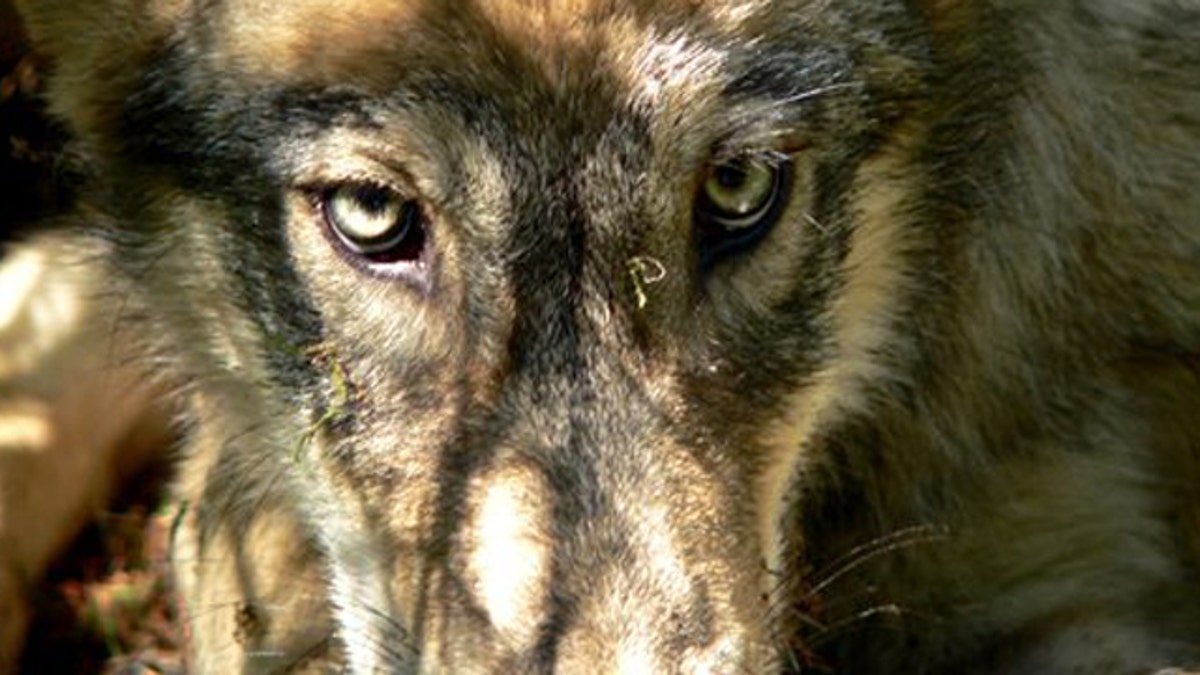
File- A gray wolf pup from the Calder Mountain pack along the Montana and Idaho borders west of Troy, Mont. (AP)
BILLINGS, Mont. – A federal appeals court on Wednesday rejected a lawsuit from conservation groups that want to block wolf hunting and trapping that have killed more than 500 of the predators across the Northern Rockies in recent months.
The ruling from a three-judge panel of the 9th U.S. Circuit Court of Appeals said Congress had the right to intervene when it stripped protections from wolves last spring.
Lawmakers stepped in after court rulings kept wolves on the endangered list for years after they reached recovery goals. Wildlife advocates claimed in their lawsuit that Congress violated the Constitution's separation of powers by interfering with the courts.
But in an opinion authored by Judge Mary Schroeder, the court said Congress was within its rights. Schroder wrote that lawmakers changed the Endangered Species Act to deal with Northern Rockies wolves, and did not directly interfere with the court's prerogative to decide when the law is being followed.
The amendment marked the first time Congress has forcibly removed a species' endangered status. It was tacked onto a federal budget bill by Idaho Republican Rep. Mike Simpson and Montana Democratic Sen. Jon Tester.
"This case has made it clear that those who persist in trying to manage wildlife through the courts, in spite of all scientific evidence that this species has recovered, no longer have a defensible position," Simpson said Wednesday.
Michael Robinson with the Center for Biological Diversity, one of the groups that sued to restore protections, said a Supreme Court appeal was possible but no decision had been made.
"We're very disappointed and very saddened," Robinson said. "Hundreds of wolves have been hunted and trapped and snared, and they are essential to their ecosystem."
He called the congressional budget bill rider that lifted protections "undemocratic" and said that it set a precedent for future political meddling with imperiled wildlife.
Wolves once thrived across North America but were exterminated across most of the continental U.S. by the 1930s, through government sponsored poisoning and bounty programs.
They were put on the endangered list in 1974. Over the last two decades, state and federal agencies have spent more than $100 million on wolf restoration programs across the country.
The Northern Rockies is now home to more than 1,700 wolves in Montana, Idaho and Wyoming and expanding populations in portions of eastern Oregon and Washington. That figure is up slightly from 2010, although Wyoming and Idaho saw slight declines.
In the Northern Rockies wolf hunting is allowed in Montana and Idaho and could resume in Wyoming this fall.
Minnesota, Michigan and Wisconsin also are considering wolf seasons after protections for wolves were lifted in the upper Great Lakes in December.
Wisconsin's legislature on Wednesday approved a measure to establish a hunting and trapping season that would run from mid-October through the end of February. It still has to be approved by the governor.
There more than 4,400 of the animals in the Great Lakes and a struggling population of several dozen wolves in the Desert Southwest. Alaska, where the animals never went on the endangered list, has an estimated 10,000 wolves.
In parts of Montana, ranchers and local officials frustrated with continuing attacks on livestock have proposed bounties for hunters that kill wolves. Montana wildlife officials said they will consider ways to expand hunting after 166 wolves were killed this season, short of the state's 220-wolf quota.
Idaho allows trapping. Its 10-month wolf season runs until June and has claimed 353 wolves so far.
Prior lawsuits resulted first in the animals' reintroduction to the Northern Rockies and then later kept them on the endangered list for a decade after the species reached recovery goal of 300 wolves in three states.
The U.S. Fish and Wildlife Service is monitoring the hunts. But agency officials have said they have no plans to intervene because the states have pledged to manage wolves responsibly.
Federal officials have pledged to step in to restore endangered species protections if wolf numbers drop to less than 100 animals in either Montana or Idaho.
Even without hunting, wolves are shot regularly in the region in response to livestock attacks. Since their reintroduction, more than 1,600 wolves have been shot by government wildlife agents or ranchers.




